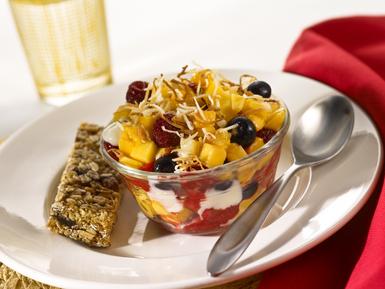High school can be a very stressful time during a teenager’s life, from maintaining grades, to balancing sports and many other extra curricular activities. The importance of living a healthy lifestyle can get easily lost in the mix.
March is National Nutrition Month, sponsored by the Academy of Nutrition and Dietetics. Their aim is help people create healthy eating and physical habits.
The United States has nationally tackled this issue with many different initiatives and groups, all focusing on one goal, to make America healthier.
From a federal standpoint, these initiatives are successful. But the root of the success comes from programs staged at the local level, and Southern Lehigh School District has specifically evolved its programs to meet these healthy living standards.
The first step towards living a healthy lifestyle, embedded in gym classes since elementary school, is to participate in physical activity. Using the idea of physical activity as the foundation for a healthier life, the high school has implemented personal fitness as one of the PE options during junior and senior years.
The personal fitness course allows students to develop fitness programs, figure out unique ways to train, and learn goal setting techniques which help aid in creating long lasting habits. Students are also able to personally monitor their heart rates which gives them a good indicator as to how hard they are working their bodies.
“Teaching PE provided me with the opportunity to positively impact young students,” gym teacher Ms. Megan Dellegrotti said, “and help them develop skills to live a healthy lifestyle.”
Physical education is only one piece of the puzzle. Eating right goes hand in hand with getting sufficient exercise, and Southern Lehigh has adapted its meal offerings to accommodate guidelines set by the National School Lunch Program.
The program released a new set of mandatory and suggested guidelines this summer, and while the district was already implementing 85 percent of the mandatory guidelines, the last 15 percent had to be worked into the lunches. One of the changes was that in order for students to purchase a “complete lunch,” they are now required to take at least a half-cup portion of fruit or vegetable with their other meal components.
This being said the district has tried to step up some of its food offerings to accommodate the changes as well as student feedback.
“We basically run on a five-week menu cycle and change a few items here and there based on feedback from cafeteria staff and students,” Mr. Gregory Martin, Food Service Manager, said. “We try new things so it doesn’t seem so mundane; for example, this month we’re trying the Chicken Cordon Bleu Sandwich, Turkey Burger, and the Spartan Burger.”
Although there have been some changes recently set by the National School Lunch Program and USDA, which we must implement, our district has always tried to provide alternatives. Both the middle school and high school have salad bars, which is essential because salads have become synonymous with eating healthy. Also, both schools offer Subway sandwiches, which tend to be leaner and healthier than a chicken patty sandwich.
Mr. Martin stressed the financial limitations the district faces in food service.
“The $3.00 we get per meal does not afford us the opportunity to serve the types of food we may want to serve,” he said. “For example, a processed breaded chicken patty, in its own right, is essentially a nutritious item, albeit it’s not as healthy as a whole muscle (unprocessed) unbreaded chicken breast would be. However, the processed chicken patty is less than half the cost of the unprocessed chicken breast.”
Living a healthy lifestyle is key, and it’s never too late to start building strong habits.
“Many times the importance of diet is often neglected especially among teenagers,” Ms. Dellegrotti said. “Developing healthy eating habits will fuel the body with energy to have a more efficient and effective workout. Students will see greater results if they focus on both diet and exercise.”



